Mount Everest Height
Why climb Mount Everest? Because it's there.
Why climb Mount Everest? Because it's there.

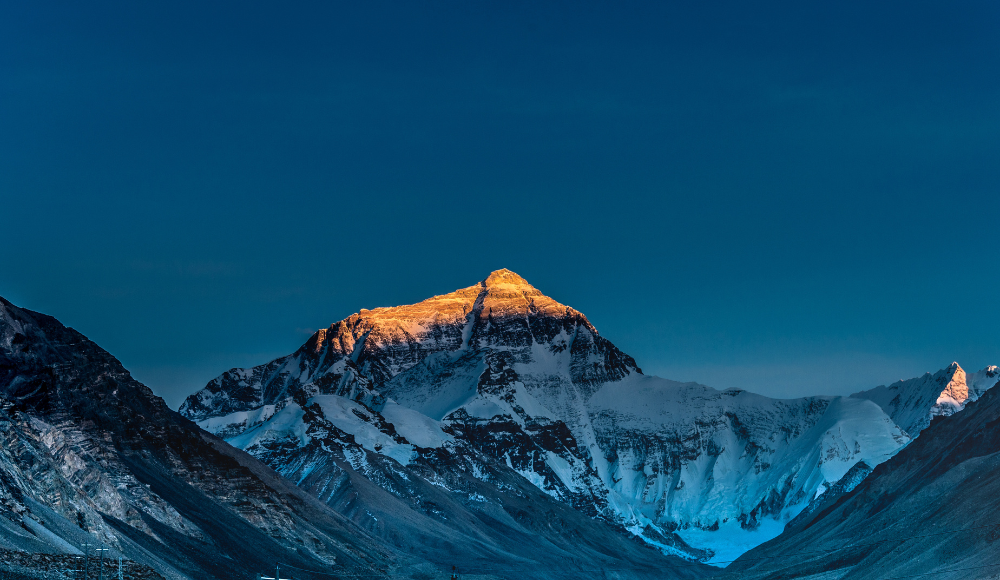
Do you have what it takes to summit the world’s highest mountain? Many do not even attempt it, either because they lack the funds and the time, or because they are unable to deal with shocking coldness, high winds, steep climbs and extreme altitudes. But those who muster up the courage to try to find that there is an abundance of fascinating plants and animals in this remote area. If you wonder what Mount Everest Height would be, then this detailed blog would be beneficial to understand the elevation mechanism of the world's most glorious peak.
Mount Everest, the world's tallest mountain, is one of Earth's most famous landmarks and a place that many have dreamed about climbing. Mount Everest has historically been the tallest mountain on Earth. From sea level to its summit, Mount Everest towers by more than 20 km over terrain that includes steep inclines and snow up to 3.5 m in depth. It is the world’s tallest peak that is known to make the world’s most astonishing records and adrenaline-inducing adventures followed by the toughest mountaineering in Nepal.
Though the elevation varies due to geographic movement and snow density, wonder what the height of Mount Everest is? It's a whopping 8848.86 meters tall!
At the summit, it becomes impossible to breathe and the thin air has no mercy to provide you with the oxygen you need. From the world’s highest point, you can witness everything that your perspectives and the climate allow you to see. But the cost at such height can be fatal. However, getting to the top of the world has been a dream of many mountaineers and they travel to Nepal to conquer Mount Everest.
Nepal is home to many of the world's most awe-inspiring natural sites. The country is still largely undeveloped, but it boasts some of the most spectacular vistas on Earth. One of Nepal’s must-visit destinations is Mount Everest, which lies just in its own backyard and has an elevation higher than any other peak in the world.
The mountain itself, which was named after Sir George Everest, a surveyor general of India, is the highest point on Earth’s landmass. The massive peak rises from the great Tibetan plateau and stretches across parts of Nepal and China. Although around this area lives more than one million people, Everest still appears unspoiled by man’s touch.
Mount Everest is by far the tallest mountain on Earth. It lies on the border of Nepal and China and is popularly referred to as the "world's highest mountain". The Nepalese name for it is Sagarmatha, meaning "Forehead of the Sky Goddess" in Sanskrit.
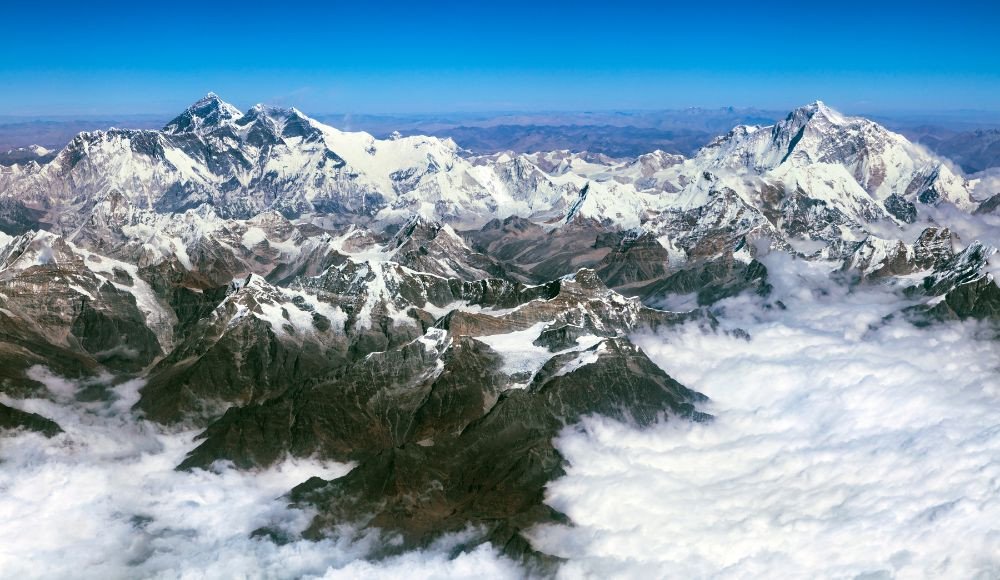
Mount Everest is the highest peak and is located in the Mahalangur section of the Himalayas range. Mount Everest stands 8,848.86 meters above sea level, so high that its summit peaks are often covered in snow even during summer. For years it has been a goal of mountaineering enthusiasts around the world - the summit was first reached by Edmund Hillary and Tenzing Norgay Sherpa on May 29th of 1953. Since then, over 6000 people have reached its summit. Though it has been climbed many times thereafter, its summit remains difficult to reach due to rocks and ice on the surface of the mountain.
Hillary’s achievement was celebrated worldwide as an epic triumph of humanity. However, your journey doesn't end at just scaling to the summit - you must also come back down. Indeed, there is little more daunting than climbing Everest peak and descending back down the treacherous slopes of this unforgiving mountain. Needless to say, it's not an easy climb.
In 1856, a surveyor named Andrew Waugh was making observations of the Himalayan peaks. He couldn't help but realize that the highest peak was missing from his records. He sent a protege of his to further investigate and make sure that it wasn't simply an oversight.
After a couple of months, the protege returned and confirmed that yes, there is an undiscovered mountain in the Himalayas that stands higher than what was recorded. Almost immediately upon hearing this, Waugh set out to explore the area himself. He had a hard time finding it because cloud cover obstructed his view. Finally, he located it and named the mountain after his predecessor British surveyor, Everest.
For a long time though, it was thought that Everest was the highest mountain in the world; in 1885 a man named William Martin Conway discovered that even higher mountains existed in what is now called K2. For a while, this turned the tables and made K2 stand as the tallest mountain on earth. However, Everest still held his title as the highest point above sea level.
Mount Everest is the tallest mountain in the world and the highest point on Earth. With an elevation of 29,031 feet (8,848.86 meters) above sea level, Mount Everest is located in Nepal and China. The elevation of this majestic peak is, however, much disputed over the years. Recently, in a joint commission, China and Nepal both announced their measurements and it is now at an acceptable height.
The old previously accepted elevation of Mount Everest was 8848 m (29,029 ft). Due to the movement of tectonic plates, the height of Everest is believed to have risen more than before.
The Summit of Mount Everest also known as "the roof of the world", is the highest point on earth, and is located in the Himalayas (the highest range in the world). The summit was first reached by Edmund Hillary and Tenzing Norgay on May 29, 1953. The historic ascent is remembered for paving the way towards the toughest adventure arena in the area of mountaineering.
The height of Mount Everest from sea level is 8,849 meters (29,032 feet), making it the tallest point on Earth. The official elevation is 8848.86 meters (29,031 feet). Geologists use sea level to determine the height of the summit of the Himalayan mountains. This is one more form of measuring the altitude of a mountain - using sea level to measure the height. It is vital to have a constant baseline in order to compare measurements. Therefore, to make universal phenomena, most of the heights of geographic structures are based on sea levels and are acceptable throughout the world.
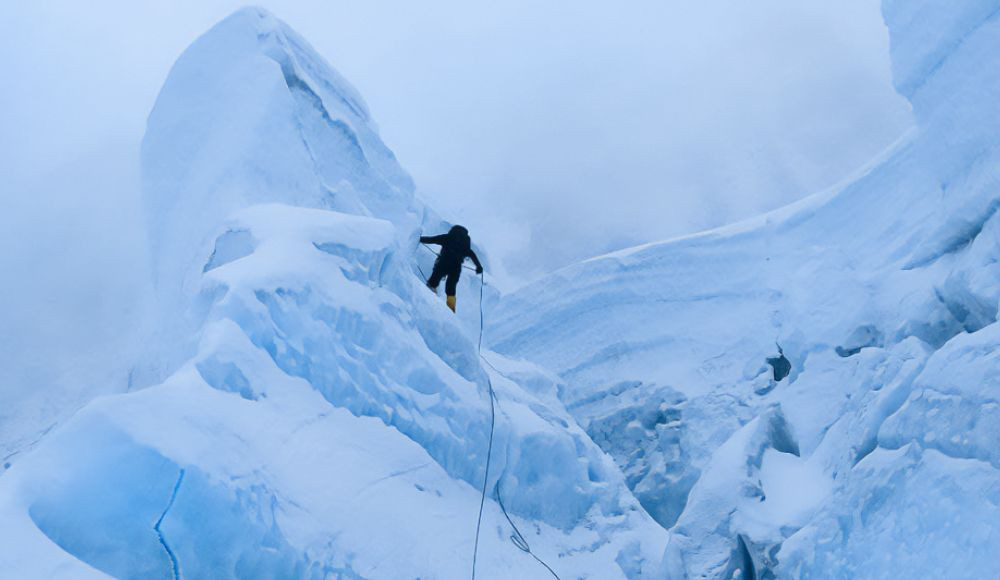
Measuring the sea level, Mt Everest's exact height is 8848.86 m (29,031ft) above sea level. In fact, from any point on the level ground of sea-level altitude, one could measure to the top of Everest and get 29,031 ft (8848.86 m).
If we are to consider the height of Mount Everest from its base, the total elevation of this gigantic eight thousander is about (8848.86-5364) 3484.86 m. This is just a mere comparison of the height that is measured from sea level and a height that is calculated on a similar base from the Everest Base Camp to its summit.
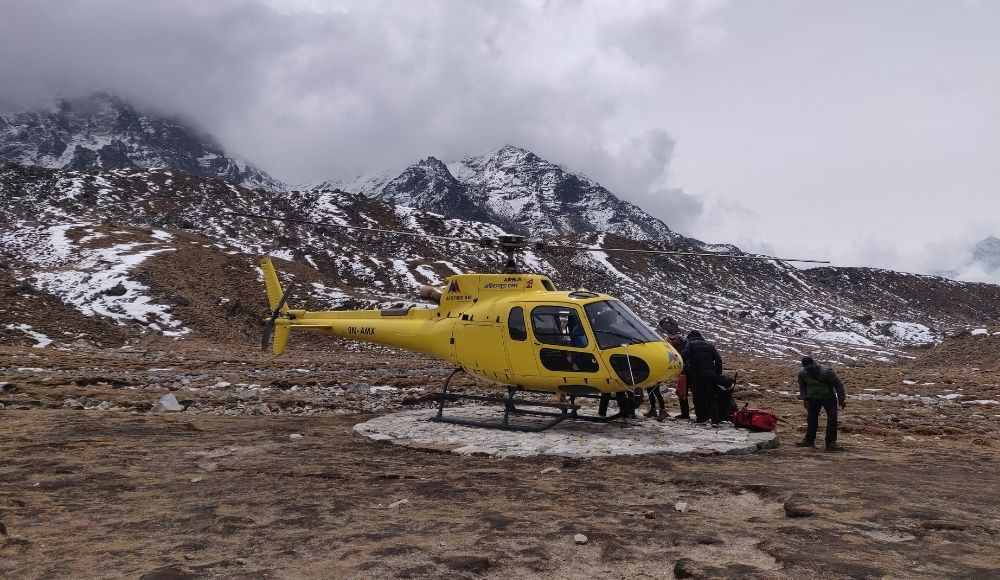
|
Summit Elevation (Feet) |
29,031 Ft |
|
Summit Elevation (Meter) |
8848.86 M |
|
Camp IV Elevation |
7906 M |
|
Camp III Elevation |
7158 M |
|
Camp II Elevation |
6474 M |
|
Camp I Elevation |
6035 M |
|
Base Camp Elevation |
5364 M |
|
Viewpoint Elevation at Kala Patthar |
5644 M |
The height of the death zone in Mount Everest is approximately from 7900 meters to 8849 meters. In this particular section, the human body would not be able to survive without artificial support for the oxygen supply.
Based on the oxygen partial pressure, humans will feel a cognitive impairment called hypoxia at an altitude of 7800 meters and an unconsciousness level till 8849 m. On the summit of Mount Everest, a typical human body would be at a critical altitude for up to two hours. At this altitude, it cannot sustain its life. This is well known as the death zone on Mount Everest.
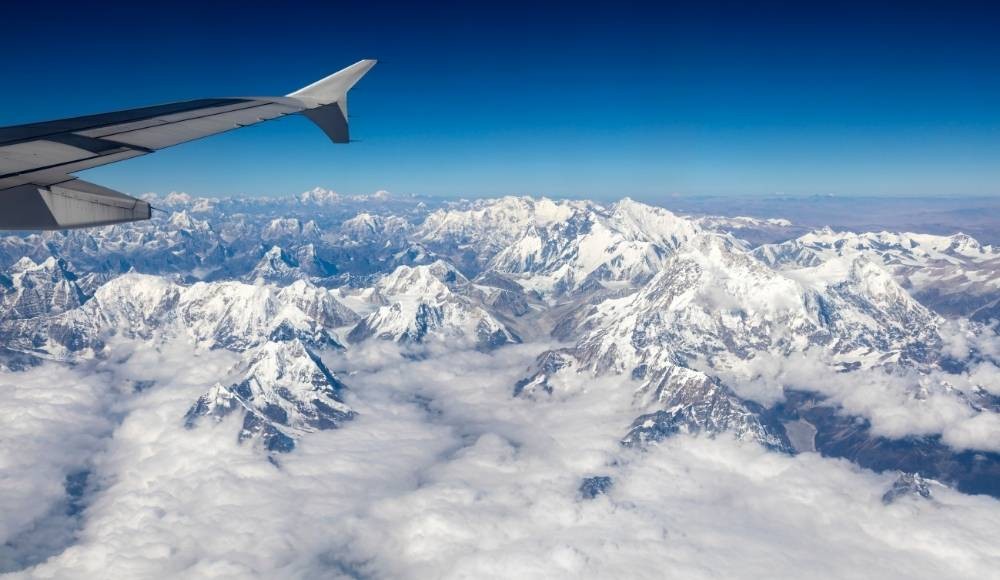
At this particular point, there are no more significant changes in weather and temperature. The major change occurs in oxygen content with the increase in altitude due to the decrease of pressure and hence the air density. The density of air decreases with the increase in altitude. Here, the atmosphere is thinner and oxygen molecules are less concentrated. This is similar to humans, we will have low oxygen levels due to thin air and we can't breathe normally as well as our brain functions will also start to decline soon. But how can we manage it? The answer lies in an automatic system based on artificial breathing devices.
Everest Base Camp is situated at an altitude of 5,364 meters (17,598 feet) at the head of the Khumbu Glacier. It's here that most of the climbing groups go to acclimatize before continuing their ascent up Mount Everest. It is a great place to take a break and have some food before carrying on with their trek up the icy slopes towards camp 4 or Mount Everest itself.
Located at the foot of Mount Everest, Everest Base Camp is the highest point along the climbing route. It's also the first place to which climbers will trek from Kathmandu or Lukla when they reach the end of their journey. In fact, most who arrive in Nepal by air choose to transfer their luggage by helicopter to Namche Bazaar, a small town for several days' rest. Thereafter, most will continue on foot through a route that runs seven days to base camp.
The Everest Base Camp is known for its expedition and trekking adventure. The trekkers can reach the Base Camp and return, however, the mountaineers will attempt their ascent after acclimatizing at the base camp at 5364 m. of this glorious mountain.
For decades, professional mountaineers have marvelled at the majesty of Everest and attempted to conquer its summit. Ever since climbers first started exploring Everest in 1953, they have attempted her summit through various routes.
Mount Everest is the tallest mountain on earth, so it’s no wonder that many people want to climb it. However, there is a multitude of reasons why someone would not be able to make this journey. Mount Everest is only accessible for six months out of the year due to harsh weather and altitude. A person must possess mountaineering experience and be in excellent physical condition in order to make the arduous trek up the mountain, which can take up to three weeks or more depending on a climber’s pace. There are also many rules, requirements and dangers that accompany the journey. Strict, unforgiving weather can cause avalanches which could kill a climber in an instant. Extreme cold temperatures could also cause a person to freeze to death.
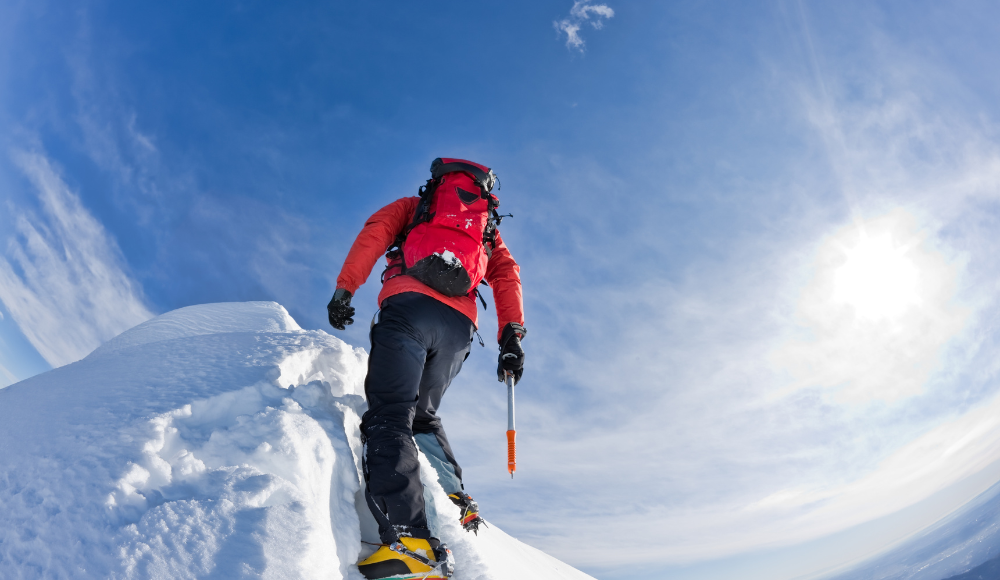
The mountain itself presents many challenges beyond the physical requirements and weather issues. Equipment must be brought in through the Khumbu Icefall, which is a massive frozen waterfall that moves constantly due to shifting temperatures of the ice and snow. This can cause equipment to fall or even get stuck. The Hillary Step is the most difficult part of the climb due to its sheer size and terrain which makes it nearly impossible for climbers. Once at higher altitudes, oxygen levels are limited and require more effort to reach. Once reached, there are many dangers in the form of avalanches, rock falls and crevasses that can cause death or injury depending on the climber’s experience.
Related Post: How Long Does it Take to climb Mount Everest?
Also Read: How Difficult is Everest Base Camp Trek?
Everest, also known as Peak XV, entered the mountain map during the 18th century as the highest mountain on earth. Its height has been continuously controversial due to different natural changes and technological issues. Since a group of British surveyors in India estimated Peak XV's elevation to be 8,778 meters in 1847, the exact height of Mount Everest has been under dispute.
The 8,848.86-meter peak, which is shared by China and Nepal, was measured jointly to determine the new height. This increased height equates to 29,031.69 feet or 8848.86 M. 8,848 meters, or 29,028 feet, was the previously accepted height.
At a function attended by both the Chinese Foreign Minister Wang Yi and the Nepalese Foreign Minister Pradeep Gyawali, the official height was revealed simultaneously in Beijing and Kathmandu. The height is said to be within centimeters of accuracy and is now accepted height throughout the world. The Survey of India measured Mount Everest in 1954 and gave it a height of 8,848 meters, but Nepal has now measured the peak itself for the first time.
The surveys carried out by both nations are said to be the most precise and were carried out using innovative technology. It is also thought that continued global warming is to blame for a decrease in the overall snow height.
Most people know Mount Everest is a mountain that is located in Asia, but not many people know where it is exactly. In the world's top ten by height, Mount Everest is the highest mountain peak with an elevation of 8,849 meters (29,031 ft) above sea level. It lies on the border between Nepal and Tibet in Asia. The summit of this unique and naturally beautiful mountain contains some spectacular scenery that you should definitely not miss out on if you find yourself visiting Everest Base Camp or the different vantage points.
One of the most unendingly popular mountain peaks among mountain climbers and explorers from all over the world, Mount Everest attracts many individuals due to its fascinating natural presence at all times. It is also one of the few mountains in the world that has special names. The name "Everest" refers to Sir George Everest, the leader of the survey team in 1856 that discovered this mountain. The word "Mount" refers to the mountain's height and not the name of the mountain, since the word is not from a local language.
This mountain borders Nepal and China. The southern part of Everest lies in Nepal whereas the Northern part lies in China. The expeditions to the summit are organized from both countries, however, climbing through Nepal is considered better than from the north.
Related Post: Where is Mount Everest Located?
At 5364 meters, Everest Base Camp offers amazing experiences. The Everest region may be a life-changing excursion for many people, even though getting there can be difficult for less experienced hikers. Unlike other mountain ranges, Everest is a marvel to behold and boasts an unparalleled view. The Everest Base Camp trek begins with a gorgeous and thrilling flight from Kathmandu to Lukla. From the Lukla flight, the Khumbu region's aerial scenery is breathtaking, and you might see some of the magnificent Mahalangur Himalayan mountain vistas.
Lukla is where the trek to the EBC begins. The hike from Lukla to Phakding along the Dudhkoshi river's banks is spectacular since you get to see the Sherpa way of life and some stunning farms. The trek's section from Phakding to Namche is the most fascinating. On this day, while trekking to Namche from Larchedovan, you will catch your first-ever glimpse of Mount Everest at Topdanda.
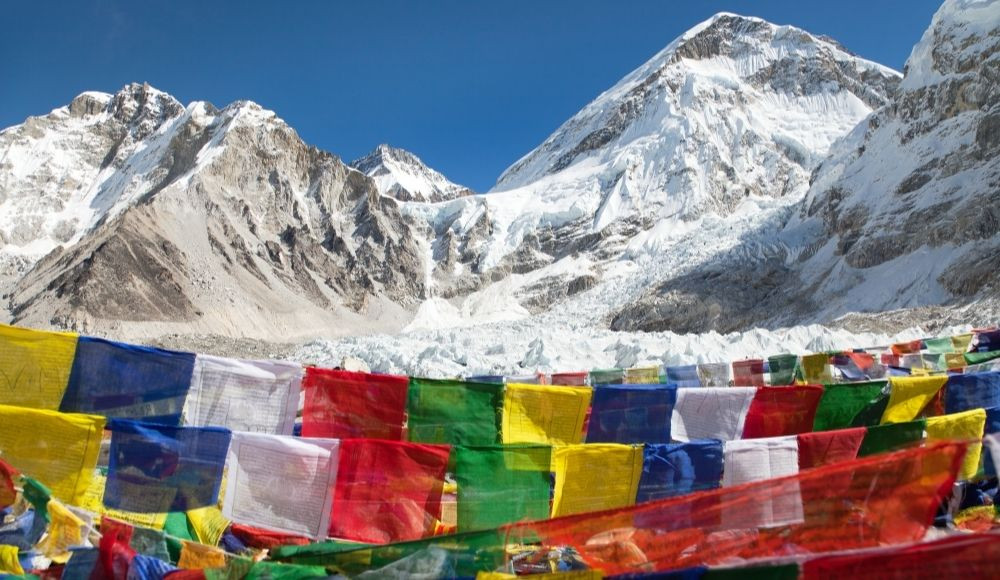
The journey from Namche to Tengboche enables trekkers to see the renowned Tengboche monastery. The Everest Base Camp trek's easiest day is the one from Tengboche to Dingboche since the terrain is flat and simple and offers views of a variety of peaks.
Although difficult, the journey from Dingboche to Lobuche is worthwhile. You'll be going to the highest memorial site in the world, built to honor the mountaineers and hikers who perished in the Himalayan disasters.
It is breathtaking to go on a trek next to the Khumbu Glacier. The sight of mountaineers establishing camps up close is spectacular. The nicest features of trekking in this area, it goes without saying, are the vistas of the Pumori and Ama Dablam as well as the never-ending mountain thrill.
The trekkers can travel from Lobuche to EBC via Gorakshep thereafter. You cannot see Mount Everest from Everest Base Camp, which is the day's interesting fact.. If you want to witness the magnificent Mount Everest, you must travel to Kala Patthar. From Kala Patthar, you can witness panoramic views of the Khumbu mountains. Following Pangboche, Namche, and Lukla, the return trail brings you back to the Kathmandu valley.
|
Kathmandu |
1350 M |
|
Lukla |
2860 M |
|
Phakding |
2610 M |
|
Namche |
3440 M |
|
Tengboche |
3860 M |
|
Dingboche |
4410 M |
|
Lobuche |
4940 M |
|
Gorakshep |
5164 M |
|
Everest Base Camp |
5364 M |
Mount Everest is a mountain in Asia which has been growing taller over time. It's not just one of those things you hear about but don't know anything about. Mount Everest is still growing and scientists are trying to figure out why.
Much like people, mountains change as they get older: their heights change, they shrink and crack, and they might even die (though this usually takes more than 200 million years!). The growth of Mount Everest is more noticeable to scientists because of the amount of time it takes for a mountain to grow. The tallest mountain in the world (Mount Everest) is growing from year to year and scientists are trying to figure out why this has happened.
Although it may not seem obvious at first, the fact that Mount Everest is still growing stems from the fact that it has been growing for a very long time.
The movement of tectonic plates in the earth makes the mountain grow. Tens of millions of years ago, the Indian and Eurasian tectonic plates collided, creating Mount Everest, which now stands at the boundary between Tibet and Nepal. A mountain range known as the Himalayas was raised along a 1,500-mile stretch after the crash crumpled the earth.
Even now, the two continental plates are continually slamming into one another. Even if other areas of the Himalayas are rising at a rate of approximately 10 mm per year, India is still moving north at a rate of 5cm (2in) each year, which causes Everest to expand by about 4mm (0.16in) every year.
The method by which we measure mountains is another element in this height variation. And more particularly, over time, the mechanism for determining sea level has changed. The base height from which we measure the majority of the natural heights on Earth is sea level, although this measurement is tricky. It is not consistent around the world, hence accurate surveying and gravity measurements are needed to determine the local sea level.
The devastating earthquake that hit Nepal in 2015 is also considered to be a potential element in altering the height of Mount Everest. However, scientists have predicted the height of Mount Everest may have become shorter than before due to the earthquake but it is found to have risen instead.
The highest peak in the world, Mount Chimborazo in Ecuador, is 2,072 meters (6,800 feet) higher than Mount Everest when measured from the center of the Earth. This occurs because the mountains along the equator are farther from the core due to the Earth's equatorial bulge.
Mauna Kea in Hawaii is the tallest mountain as measured from the base of the mountain. However, the majority of the mountain is submerged in water. So, Mount Everest qualifies as the highest mountain summit. Although it is reported to grow by 4 mm each year, its height has been steadily rising.
Mount Everest is one of the deadliest places on Earth, with every year over 100 climbers dying and many more becoming seriously injured. Despite its dangerous reputation and is located near the highest point on Earth, Mount Everest has become an Everest mountain climbing expedition dream for hundreds of thrill-seekers each year. Explorers describe it as a tremendous adventure, but the risks to their lives should not be ignored.
There are many reasons why Mount Everest is so dangerous, but you don’t need to be a scientist to realize that being at the highest point on Earth can lead to life-threatening situations. The problems begin at the base of these mountain peaks with avalanches, rock falls and blizzards. Although these hazards are difficult to avoid, you can take steps by watching out for them.
Avalanches occur because of an imbalance between snow and wind. They could happen anytime, anywhere on Mount Everest and usually speed up during the springtime. The same idea applies to rock falls; climbers should avoid using the last few feet to climb Mount Everest’s peak, as it’s the most likely place for a rock fall to happen. The summit location is also near some of the deadliest glaciers in the world, so climbers should be careful when they are on those peaks.
Blizzards and extremely low temperatures are also dangers that climbers should be aware of. Climbers should ensure that they have professional gear and the right clothing to protect them from the wind and cold conditions. Without the proper gear, it’s possible to be in danger from hypothermia even if you stay at base camp.
Mount Everest is the world's highest mountain, measuring approximately 29,031 feet above sea level. Mount Everest is located in Nepal and China. The summit of Everest has never been reached without using oxygen tanks and other climbing equipment. Mount Everest was first summited in 1953 by a team led by Edmund Hillary.
Thousands of people attempt to climb this mountain each year but many do not succeed due to adverse conditions such as high winds, cold temperatures, lack of oxygen and altitude sickness. Despite this, Mount Everest is one of the most popular destinations for mountain climbers in the world.
Mountain climbers travel from all parts of the world to visit Mount Everest. They make a pilgrimage to this mountain and are overwhelmed by its majestic beauty. The mountain is known as the 'The Third Pole' on Earth, due to the amount of ice that has accumulated on it over time.
Most people who have tried to climb Mount Everest have been men but female climbers have also had a presence on this mountain since 1980. Women have historically found it harder to climb Mount Everest due to the dangers associated with high altitude.
The popularity of this mountain is not only associated with the mountaineers' rage to explore and climb the peaks. It is the place where a lot of world records were made. It is the place where people overcome their fear with the most astonishing victory on earth. What would be the greatest achievement in the mountaineering arena other than conquering Everest - the highest point on earth itself!
Rainbow valley is where the deceased rest. The colourful and dreadsome scattered human bodies in the Everest death zone make rainbow-like different colours due to their gears. There is no room for mistakes in mountaineering, that too, in higher elevations. The deceased mountaineers are pushed off from the trail that leads the bodies into the rainbow valley. It acts as the ultimate place where the dead bodies are scattered due to inaccessibility to bring them down. The litter, oxygen tanks, human remains, bags, and trashes are eventually pushed to make the way clear.
Everybody wants to see Mount Everest; from its expedition to its base camp journey, people are undoubtedly attached to catching a glimpse of it. Ever since Hillary and Tenzing Norgay climbed Everest, hordes of visitors have travelled to Nepal in hopes of doing the same, but each time, things don't go as planned. You must be well-prepared for the summit ascent. With a lot of events taking place in every season, incredible records are consistently set and broken every year. Find some of Mount Everest's Interesting Facts Here.
The best period to ascend Everest is from late March, through April, and into mid-June. Many climbers attempt to reach Everest's summit during these months. The months of April and May are said to be ideal for climbing Mount Everest.
You would believe that since it is summer, the months of mid-June to august are ideal for catching sight of Mount Everest. But the monsoon season has started, and it will not be the best time to see Mount Everest. There will be mist all around Everest.
Read More: Best Time to Climb Mount Everest
The Burj Khalifa is 828 meters tall, whereas Mount Everest is 8848 meters tall! Therefore, we require exactly 10.7 Burj Khalifas to make a structure as tall as Everest.
The height of Mount Everest is 8848.6 meters and this is the newly announced height by the Governments of Nepal and China. After much dispute over the existing height of Mount Everest, both countries conducted their own measurement and concluded with the same new increased height.
In terms of politics and geography, China and Nepal jointly control Mount Everest, which is situated at the boundary between the two nations.
In high altitudes, you can see animals like yaks. However, due to the high altitude and icy temperature, it's possible that no animals could live there. Therefore, it is challenging to see wildlife and other species on Mount Everest. But it's thought that Mount Everest is home to the fabled Yeti.
The Khumbu region's most well-known attraction is Everest Base Camp. Take pictures, discover the Himalayan glaciers' pure splendour, and marvel at the magnificent Himalayas. The finest part about trekking in this area is the mountain range that is spectacular and in front of you. Mountaineering, Trekking, Snowboarding etc. are some of the popular activities to do on Everest.
A 60-day or two-month preparation period is required for the Mt. Everest expedition. It presents a number of difficulties, such as extremely cold circumstances, low-freezing temperatures, and challenging climbing terrain. So, yes there is a significant difficulty that requires tremendous energy and preparation to conquer this gigantic mountain.